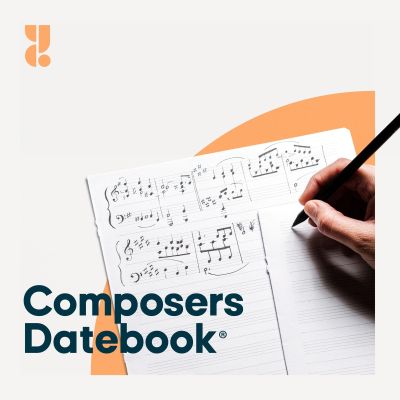Composers Datebook™ is a daily two-minute program designed to inform, engage, and entertain listeners with timely information about composers of the past and present. Each program notes significant or intriguing musical events involving composers of the past and present, with appropriate and accessible music related to each.
Mendelssohn and Richard Rodgers the record
Today in 1948, about 50 members of the press were invited to New York's Waldorf-Astoria Hotel for a demonstration of a new kind of phonograph record. A Columbia Records employee named Edward Wallerstein stood between a big stack of heavy, shellac, 78-rpm albums, the standard for recorded music in those days, and a noticeably slimmer stack of vinyl discs, a new format which Wallerstein had dubbed "LPs"—"long playing" records that spun at 33 and 1/3 revolutions per minute. Before 1948, if you wanted to buy a recording of a complete symphony or concerto, it meant the purchase of up to a dozen separate 78s, each playing only four minutes a side. In developing its new LP-record, Columbia's goal was to fit complete classical works onto a SINGLE disc. "I timed I don't know how many works in the classical repertory," recalled Wallerstein, "and came up with a figure of seventeen minutes to a side. This would enable about 90% of all classical music to be put on two sides of one record." Columbia's first LP release was a recording of the Mendelssohn Violin Concerto, with Nathan Milstein the soloist and the New York Philharmonic conducted by Bruno Walter. The following year, Columbia struck pay dirt when it released the original cast album of a brand-new Broadway musical by Richard Rodgers. The 1949 Columbia LP of Mary Martin and Ezio Pinza singing the hit tunes from "South Pacific" became a best-seller, and by 1951 the LP-record had won: No one was making 78s anymore.
